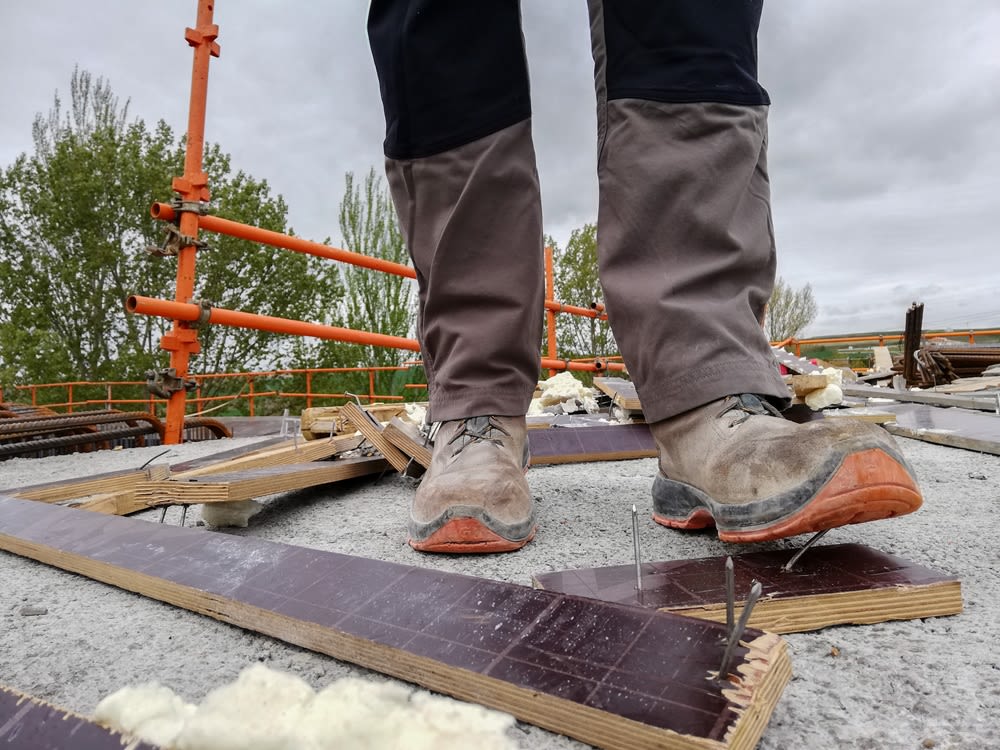
Workplace safety can be a frightening topic. Accidents cause millions of injuries each year, leading to billions of dollars in costs for businesses. Lost productivity adds up to hundreds of millions of lost days, and slow response times can turn a basic injury into a life-threatening issue.
However, there are easy ways to make any workplace safer. Keep reading, and we’ll break down seven scary facts about workplace safety and the steps you can take to make them a little less daunting.
A worker is injured every 7 seconds
According to the National Safety Council, an American worker is injured every seven seconds. That adds up to a total of 4.7 million injuries a year. Between the costs of workers' compensation and lost productivity, these injuries cost businesses around $176 billion each year.
Safety is important for all industries, but industries like construction or food and beverage face unique challenges like heavy equipment or cuts and burns. Without the right equipment and training, incidents in these workplaces can become a major expense.
The top 5 most common workplace accidents are:
Overexertion and bodily reaction
Slips, trips, and falls
Contact with objects and equipment
Transportation incidents
Fire and explosions
Fortunately, there are simple steps to help prevent these accidents and quickly treat injuries if they do occur. Equipment like high visibility and flame resistant workwear, nonslip floor mats, and First Aid cabinets can make a life-saving difference.
The average workplace injury costs $43,000
Healthcare is expensive, and workplace injuries can have a big financial impact. But the direct price of medical treatment isn’t the only factor. Lost productivity, administrative expenses, and employer costs can make workplace injuries have a hefty price tag.
The National Safety Council estimates that that the average cost of an injury that requires medical consultation is $43,000. If a serious incident leads to a death, the average cost is $1,460,000. If poor workplace safety standards lead to injuries or death, the financial liability could devastate a business.
Time is money, and the lost productivity from workplace injuries can quickly add up. The NSC states that around 103,000,000 days were lost in 2023 from injuries, and that accidents from that year alone will lead to around 55,000,000 lost days in future years. That lost time means lost productivity and lost opportunities.
Once again, investing in workplace safety makes sense. If you rent a Safety Station for a small fee and it’s able to prevent even one trip to the emergency room, it has immediately paid for itself many times over. If an AED can save one life, it can also save a business up to seven figures. The costs of proper workplace safety and training are nothing compared to the costs of injuries.
Slips, trips, and falls cause more than 25% of all workplace injuries
Slips, trips, and falls are one of the most common workplace accidents, making up 27.5% of incidents. They’re a common occurrence even in relatively safe workplaces like offices. In areas with lots of obstacles, liquids, inclement weather, or hazards, they are even more common and dangerous.
The Occupational Safety and Health Administration offers these guidelines to help prevent falls:
Clear obstacles from walkways
Clean up spills and debris
Keep floors clean and dry
Use railings, floor hole covers, and guard rails to clearly mark holes and elevated areas
Train your staff
Provide protective equipment and appropriate footwear
Floor mats and good mops can make a big difference in preventing workplace falls. Scraper mats remove water, dirt, and mud to keep interiors clean. Good floor mats should have a nonslip backing to stay secure. Wet and dry mops tackle both light debris and large spills, while microfiber mops can ensure a deep clean for hygienic environments.
10,000 workers suffer cardiac arrests each year
Heart disease is a leading cause of death in the United States, with one person dying every 34 seconds from cardiovascular disease. Someone has a heart attack every 40 seconds.
During cardiac arrest, early treatment is essential, and every moment without treatment drastically decreases the chance of survival.
In the workplace, there are around 10,000 cardiac arrests every year. Unfortunately, only around 50% of people know where to locate an automated external defibrillator (AED) at their job.
Access to AEDs could save thousands of lives every year, and training can improve outcomes even further. AEDs include easy-to-follow instructions and step-by-step voice guidance, so anyone can use it. However, ensuring your team is trained in AED usage can provide a life-saving advantage during an emergency.
Make sure your AEDs, along with other safety equipment like First Aid cabinets, are clearly visible, easily accessible, and free from obstructions. In an emergency, quick access to safety supplies can make all the difference.
AEDs should also be regularly inspected to make sure that everything is working like it should. A managed First Aid and safety rental program can help with the busywork and make sure it’s up to date and ready for use.
Musculoskeletal disorders cost businesses $18 billion per year
Musculoskeletal disorders are injuries that can happen from heavy lifting, repetitive motion, and awkward postures. These injuries can include tendonitis, carpal tunnel syndrome, and lower back pain. Many musculoskeletal disorders can result in long-term or lifelong injuries, making them expensive medical issues. Workplace musculoskeletal disorders ultimately cost businesses $18 billion per year.
There are some important steps to help prevent musculoskeletal disorders in the workplace:
Use proper lifting techniques
Use aids like carts or hand trucks for heavy items
Seek assistance when needed
Incorporate short breaks during strenuous tasks
Take frequent breaks from static positions
Stretch and exercise regularly
Encourage your team to stretch, take breaks when needed, and get help with heavy objects. These simple steps can immediately cut down on the rate of injury. Anti-fatigue Mats can also help prevent these incidents, especially for employees that stand for long periods.
45% of burns happen in the workplace
Especially common in construction, industrial businesses, food and beverage establishments, and food production, burns are a painful and expensive injury that plagues many industries. 45% of all burns happen in the workplace, so it’s essential for businesses to take steps to prevent and prepare for burns.
Personal Protective Equipment (PPE) is key. From welding masks and protective goggles to flame resistant clothing, the right gear is the front line of defense against thermal burns, chemical burns, and electrical burns. PPE should also be combined with training on safe practices around open flames, electrical hazards, and other potential burn sources.
If a burn does occur, effective First Aid can save the day. A good First Aid cabinet will include supplies like burn gel and dressings to help relieve pain and minimize damage. Some First Aid cabinets even include grab-and-go modules to quickly and effectively treat specific injuries like burns.
It takes 7 minutes for ambulances to arrive
There will always be a delay between calling 911 and an ambulance arriving. On average, it takes 7 minutes for an ambulance to reach the site of an emergency. In an urban or suburban area, it might be closer to 6 minutes, but in a rural area, it takes ambulances an average of 13 minutes to arrive.
During an emergency, every minute counts. For example, if someone suffers a cardiac arrest, their odds of surviving decrease by 10% for every minute without CPR or an AED. If some aid is administered immediately, it can drastically increase survival chances and decrease recovery time.
Once again, having prominent, easy to access workplace First Aid and safety supplies is essential if an emergency occurs. Being able to render immediate aid could save lives, improve morale as your team feels safe, and prevent expensive liability issues.
Keep your workplace safe (the easy way)
While workplace safety is important to avoid grisly injuries, terrifying costs, and ghastly dips in productivity, keeping a workplace safe can be a bit of a nightmare. Maintaining safety equipment, replenishing First Aid supplies, and organizing what you need can be a big task.
Fortunately, Alsco Uniforms offers a comprehensive range of safety and First Aid supplies to save the day. From fully-stocked First Aid Cabinets to AEDs to floor mats, we have what you need to make your workplace safer. We’ll install everything, restock your supplies, and make any needed repairs or replacements through our consistent delivery program.
Reach out today for a quote on our safety solutions.
